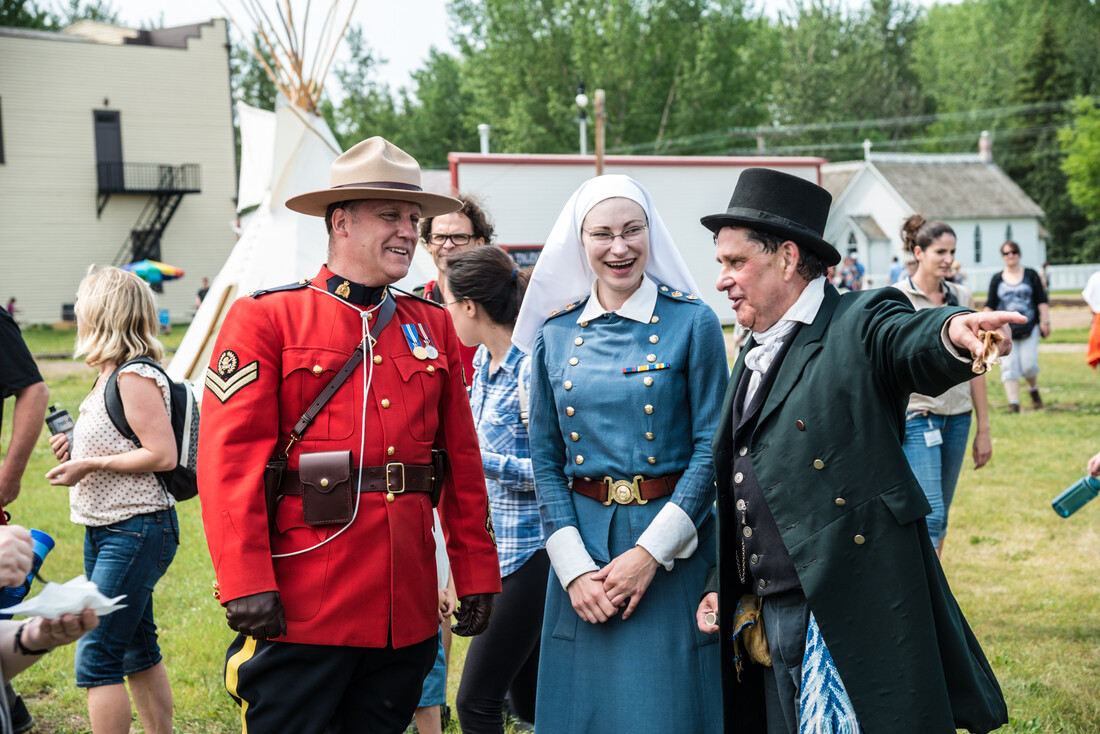
Honouring First World War Nurses
At Fort Edmonton Park, we thank those who have fought for our country, and remember those who were involved in the Great World War in some way or another, from the soldiers and nurses on the battlefield to the farmers and factory workers.
A total of 53 Canadian nurses lost their lives while serving overseas. Their role during war extends back to the North-West Rebellion of 1885. By 1908, the Canadian Army Nursing Corps (CANC) was established and nurses were officially part of the Canadian military. During the Great War, the CANC served as part of the Canadian Expeditionary Force (CEF).
When the war started in August 1914, nursing had become an organized profession. Despite the name of Nursing Sister, nurses in the CANC bore no religious affiliation; all were required to have diploma from a recognized school and undergo six weeks of training in military nursing before becoming a member of the CANC with the rank, salary, leaves, and retirement plan of a lieutenant. In the Great War, Canada was the only country to integrate its nursing service into its military force. This indicated the high level of reputation of the profession. Although lieutenants by rank, nurses were more often referred to as ˜bluebirds’ due to their blue uniforms and white wimples.
The first contingent of Canadian nurses left for England in September 1914. By the end of the conflict in November 1918 this group of 100 women had been joined by nearly 2,500 more. Most worked in England and France, while some were posted to the Eastern Mediterranean. Nursing units rotated between large general hospitals in Britain, smaller stationary hospitals on the Continent, and casualty clearing stations and ambulances close to the front. The tasks Nursing Sisters performed varied, including attending to wound dressings and fighting infections, supporting doctors in surgeries, and administering to the well being of the patients.
Members of the CANC were mostly young, single women, averaging 24 years old. Far from home and in difficult and dangerous situations, a sense of solidarity and deep friendship developed among the medical personnel. Nurses took advantage of social events and the opportunity to travel as a way to combat the realities of living under the shadow of war. Their commission as officers meant that while in uniform Nursing Sisters could socialize only with other officers, something viewed with envy by British nurses who were without a military rank.
One of the most well-known Nursing Sisters of the Great War was Roberta McAdams, who in 1917 became the first women elected to the Alberta Legislature. Others of note are Madeleine Jaffray, the sole Nursing Sister to become an amputee during the conflict, and moved to Edmonton after the war, and locally, Margaret Anna Kennedy, the only woman from St. Albert to enlist for overseas service.
Fort Edmonton Park added ribbon bars to the uniforms of our Nursing Sisters as a way to commemorate the hundredth anniversary of the war. Each was decorated with (from left to right) a Royal Red Cross (RRC), a British War Medal, and a Victory Medal. The RRC is unique to nurses, and is awarded to those who have shown “exceptional devotion and competency in the performance of actual nursing duties, over a continuous and long period, or who has performed some very exceptional act of bravery and devotion at her post of duty”-Veterans Affairs Canada. It is a prestigious decoration, as only 132 RRC Class 1s and 446 RRC Class 2s were awarded to Canadians nurses.
Next time you visit the Park, ask the Nursing Sisters on 1920s Street about their experiences during the war and attend a meeting of the Overseas Nursing Sisters Association of Canada.